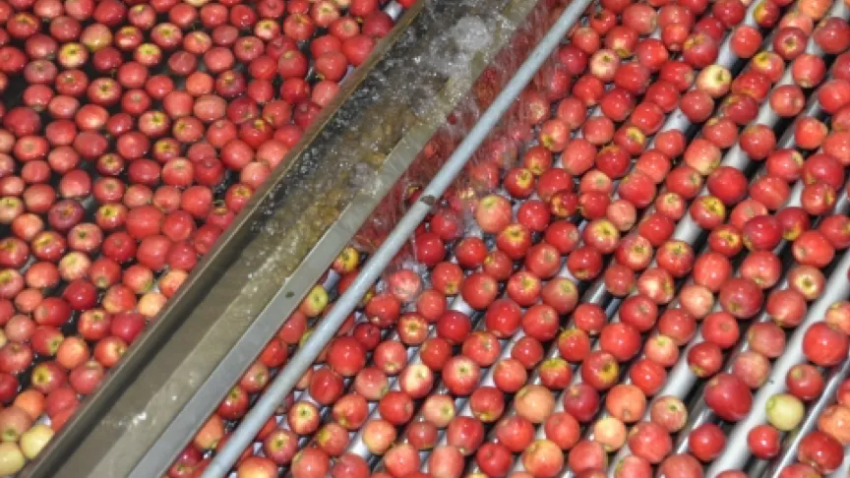You are here
Back to topChina’s Apple Production Set To Fall 5 Million Tons in 2022/23

A recent report on fresh apples, grapes and pears released by the U.S. Department of Agriculture’s Foreign Agricultural Service has detailed the impact of adverse weather conditions on apple harvests in China, the United States, South Africa, New Zealand and other major apple producers. Global apple production in the 2022/23 season is expected to reach 78.4 million metric tons, representing a decrease of 4.3 million metric tons. Meanwhile, global apple exports are estimated to fall to just 5.5 million metric tons, a decrease of over 1.0 million metric tons, on account of reduced shipments from China, Iran and Moldova.
China’s apple production is forecast to hit 41.0 million metric tons, corresponding to a decrease of almost 5.0 million metric tons, because of high temperatures during bloom reducing fruit set in the major producing provinces of Shaanxi and Shandong. In several northern and western provinces, low market returns are spurring growers to cut down their trees, while the aging of farmers is also impacting orchard management. This reduced supply is anticipated to lead to a 20% drop in China’s apple exports to only 770,000 metric tons, with imports expected to increase by 13% to 85,000 metric tons.

Cyclone Gabrielle hit New Zealand’s North Island in February of this year, causing extensive damage to the country’s apple orchards. Although the South Island enjoyed good growing conditions throughout the season, the increase in production has only partially offset the losses on the North Island, which accounts for over 65% of the country’s apples. Consequently, New Zealand’s total apple production is expected to fall to just 453,000 metric tons, a decrease of 60,000 metric tons, with exports hitting their lowest levels since the 2009/10 season.

South African growers experienced record apple harvests over the previous two years, but with the trees now in a recovery phase production is expected to decrease by 51,000 metric tons to approximately 1.2 million metric tons. Despite steady production, increased cold-storage costs and a lower supply of export-quality apples are anticipated to lead to reduced exports. Hailstorms in the Western Cape, a major production region, have also increased the volume of low-quality fruit, with apples originally intended for export being diverted to processing and sale on the domestic market.
Chilean production is expected to shrink only slightly to 1.0 million metric tons, with good growing conditions and higher yields mostly offsetting a continued decrease in planted area. Exports are expected to decrease to 585,000 metric tons.
European Union apple production is forecast to increase slightly to 12.8 million metric tons because of higher output in Poland, the result of good flowering and pollination and the continued replacement of old trees with new higher-yielding varieties. Despite the increase in supply, exports are expected to fall as rising cold-storage costs lead to more apples being used in processing. The greater supply is also anticipated to reduce import demand to 290,000 metric tons, a decrease of 41,000 metric tons compared with the previous season.
U.S. apple production in the 2022/23 season is expected to fall to 4.3 million metric tons, the lowest level since 2012/13. Growers in Michigan benefited from ideal weather conditions throughout the season and obtained record-breaking yields, although these were unable to offset an overall decline across Washington state caused by adverse weather conditions. Exports are anticipated to fall to around 590,000 metric tons, representing a year-on-year decline of almost 20% and the lowest level in nearly two decades.
Turkey’s production is expected to reach 4.8 million metric tons, an increase of 277,000 metric tons, on account of good growing conditions and the planting of higher-yielding varieties. Meanwhile, exports are forecast to reach 410,000 metric tons. In India, production is expected to increase slightly to a total of 2.4 million metric tons owing to abundant rainfall during the fruiting season. With reduced supplies from Iran and the European Union, India’s imports are expected to fall by more than 60,000 metric tons to 385,000 metric tons.
Images: Pixabay (main image), USDA Foreign Agricultural Service (body images)
This article was translated from Chinese. Read the original article.














Add new comment